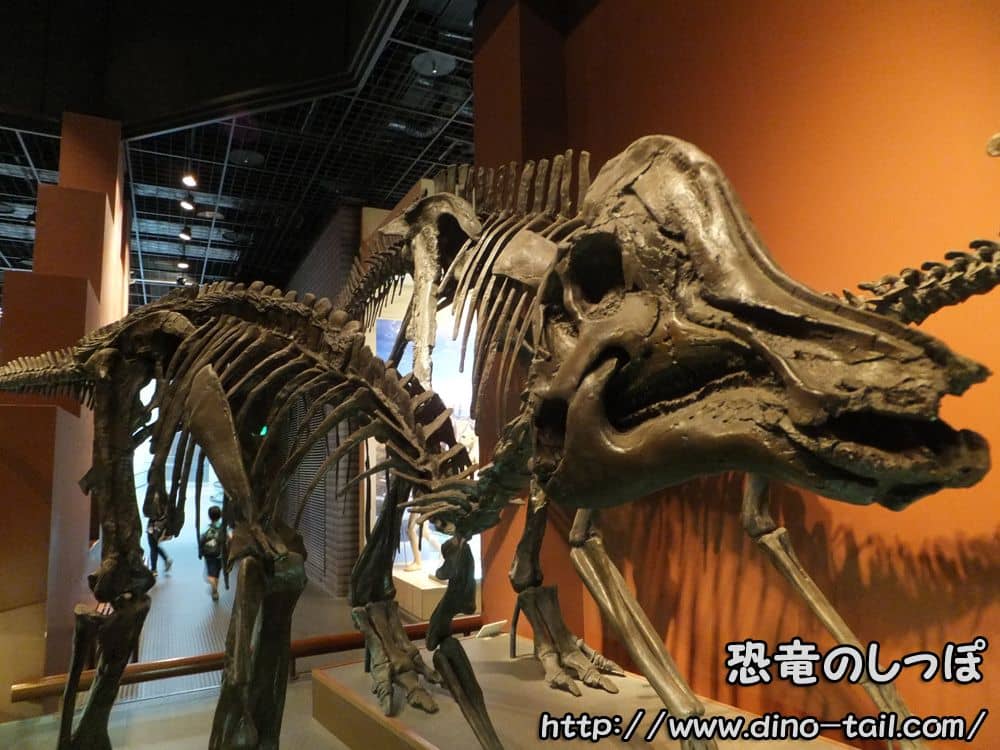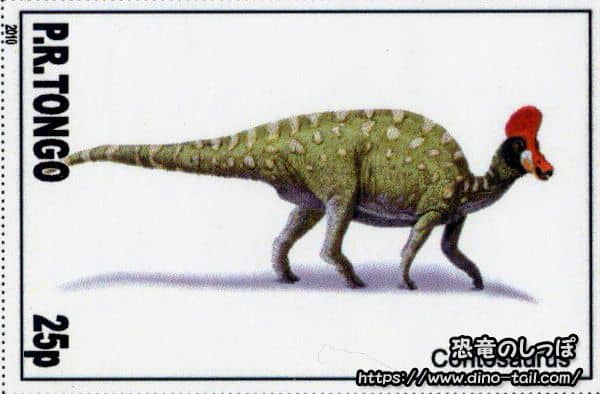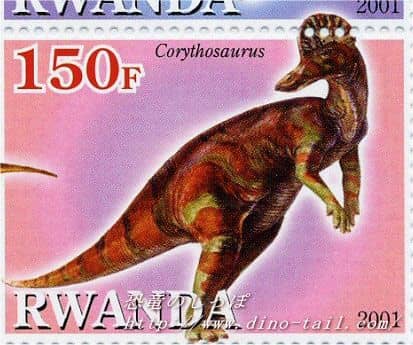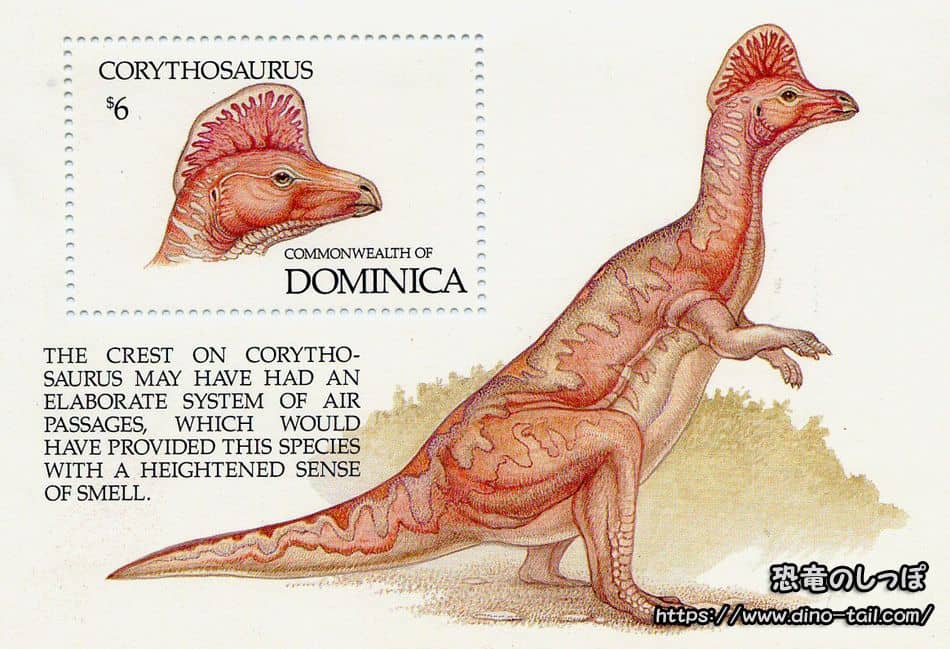About Corythosaurus
| Scientific Name (Genus) | Corythosaurus |
| Meaning of Name |
Helmet lizard
korys (Corinthian helmet) [Greek] - saurus (lizard) [Greek] |
| Classification | Ornithischia, Ornithopoda (Hadrosauridae) |
| Total Length | Approx. 8-9m |
| Diet | Herbivorous |
| Period | Late Cretaceous (approx. 77-76.5 million years ago) |
| Species | Corythosaurus casuarius |
| Year of Paper Publication | 1914 |
| Genus Name Publication | Brown, Barnum. (1914). Corythosaurus casuarius, a New Crested Dinosaur from the Belly River Cretaceous, with Provisional Classification of the Family Trachodontidae. American Museum of Natural History Bulletin, 33. |
Characteristics
The most distinctive feature of Corythosaurus is the hollow crest on its head.
It lived during the Late Cretaceous (about 77-76.5 million years ago).
More than 20 skull fossils have been excavated.
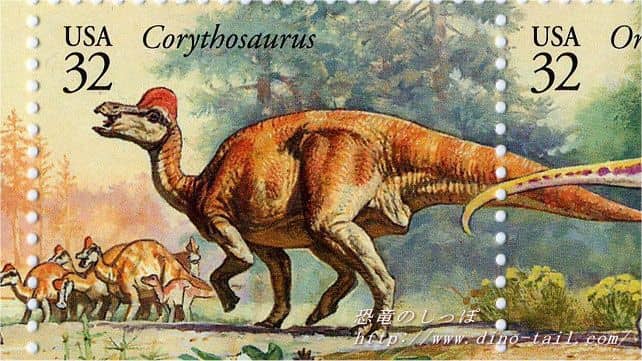
The crest on its head was not developed in juveniles and seems to have grown larger as the animal matured.
Tubes connected to the nose extended into the crest, which is thought to have been used for vocalization. A detailed study of the nasal cavity in 1994 revealed it likely produced low-pitched, trombone-like sounds below 400Hz.
The unique helmet-like shape may have also been used to attract mates or for visual identification among its own kind. The shape may have differed between males and females.
Its mouth contained over 600 teeth, which were used to grind tough plants. Fossils with conifers, seeds, and twigs preserved in the stomach area have also been found.
Discovery and Publication
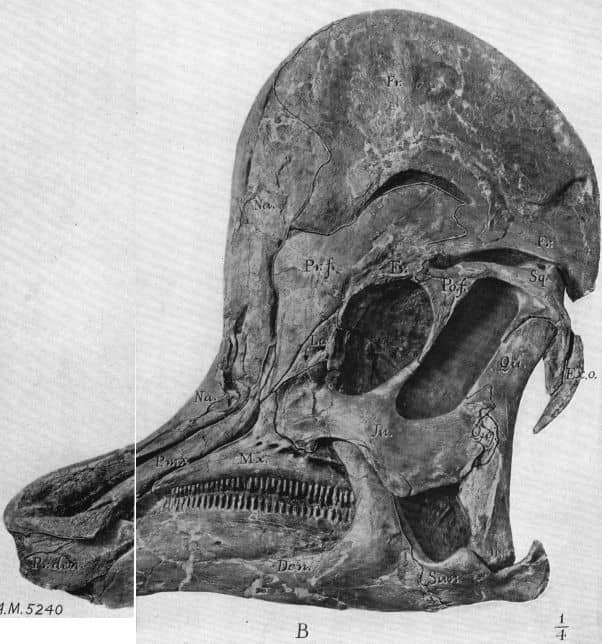
Source: Brown, Barnum. (1914). Corythosaurus casuarius, a New Crested Dinosaur from the Belly River Cretaceous, with Provisional Classification of the Family Trachodontidae. American Museum of Natural History Bulletin, 33.
The first Corythosaurus was found in 1911 along the Red Deer River in Alberta, Canada. The specimen discovered at that time, AMNH 5240, was a nearly complete skeleton with some skin impressions preserved. It is noteworthy that the scapula and cheekbones were preserved in what would have been their natural positions in life.
In 1914, the American fossil hunter Barnum Brown described "Corythosaurus."
As an employee of the American Museum of Natural History, Barnum Brown is said to have collected a wide variety of items in addition to fossils. He was a fossil hunter who also discovered and excavated the fossils of Tyrannosaurus rex in southeastern Montana in 1902, and the hind foot of Albertosaurus at Dry Island Buffalo Jump Provincial Park in Canada in 1910.
What the "Dinosaur Mummy" Reveals About Its Appearance
The first Corythosaurus fossil discovered in 1911 (specimen AMNH 5240) is an extremely valuable specimen, sometimes called a "dinosaur mummy," because it preserved not only the skeleton but also extensive skin impressions.
From these skin fossils, we know that the body of Corythosaurus was not covered with overlapping scales like a snake or lizard, but was densely covered in a mosaic of various-sized polygonal, wart-like scales (tubercles). Larger scales were concentrated, particularly on the abdomen. Unfortunately, the skin color is unknown, but this provides an important clue about its texture.
Furthermore, the stomach contents of this specimen were preserved as fossils, revealing what it ate just before it died. The contents included twigs, leaves, seeds, and fruits of conifers that were abundant at the time, indicating that Corythosaurus had a diverse plant-based diet.
Corythosaurus Stamp & Fossil Gallery
